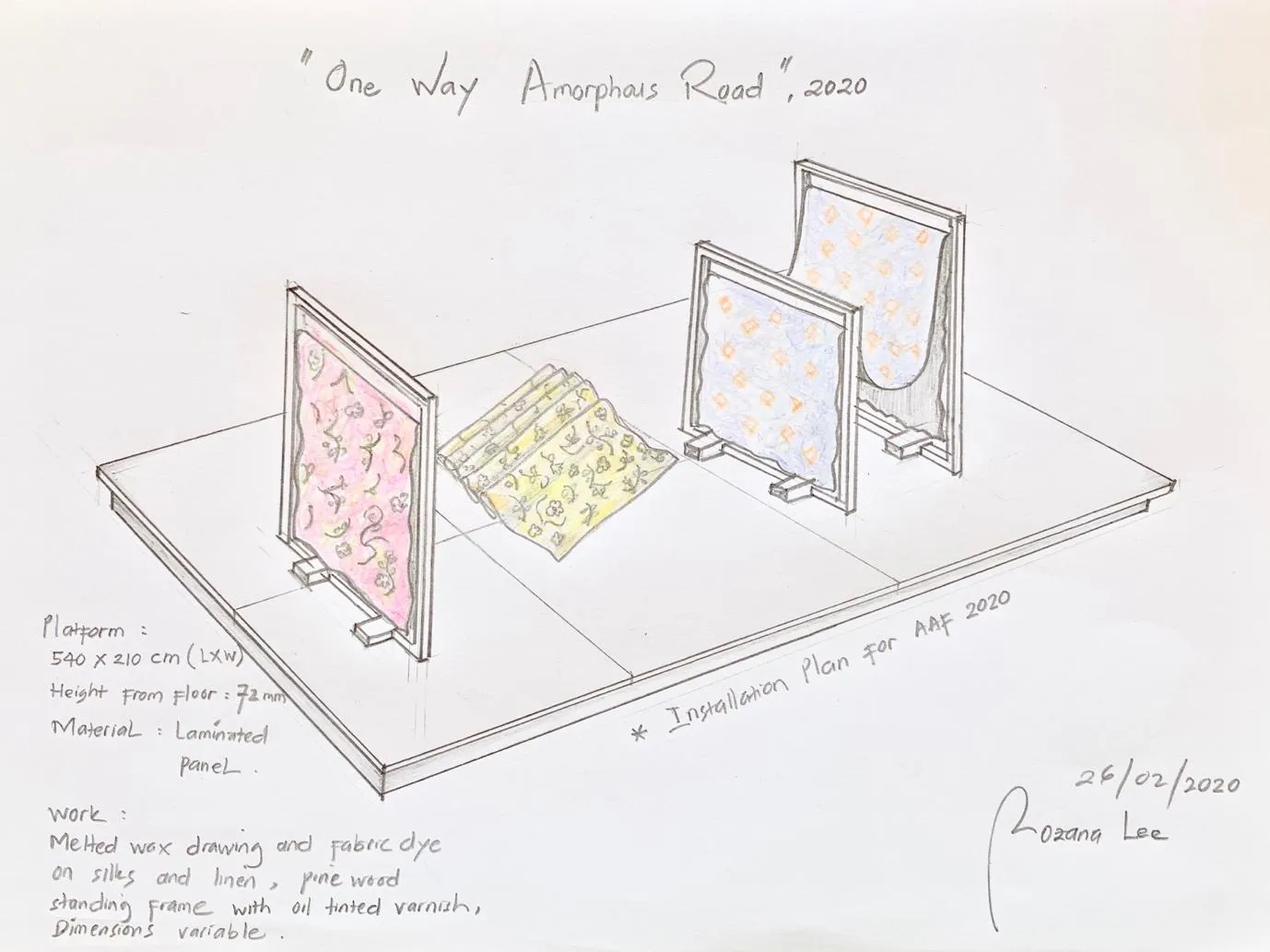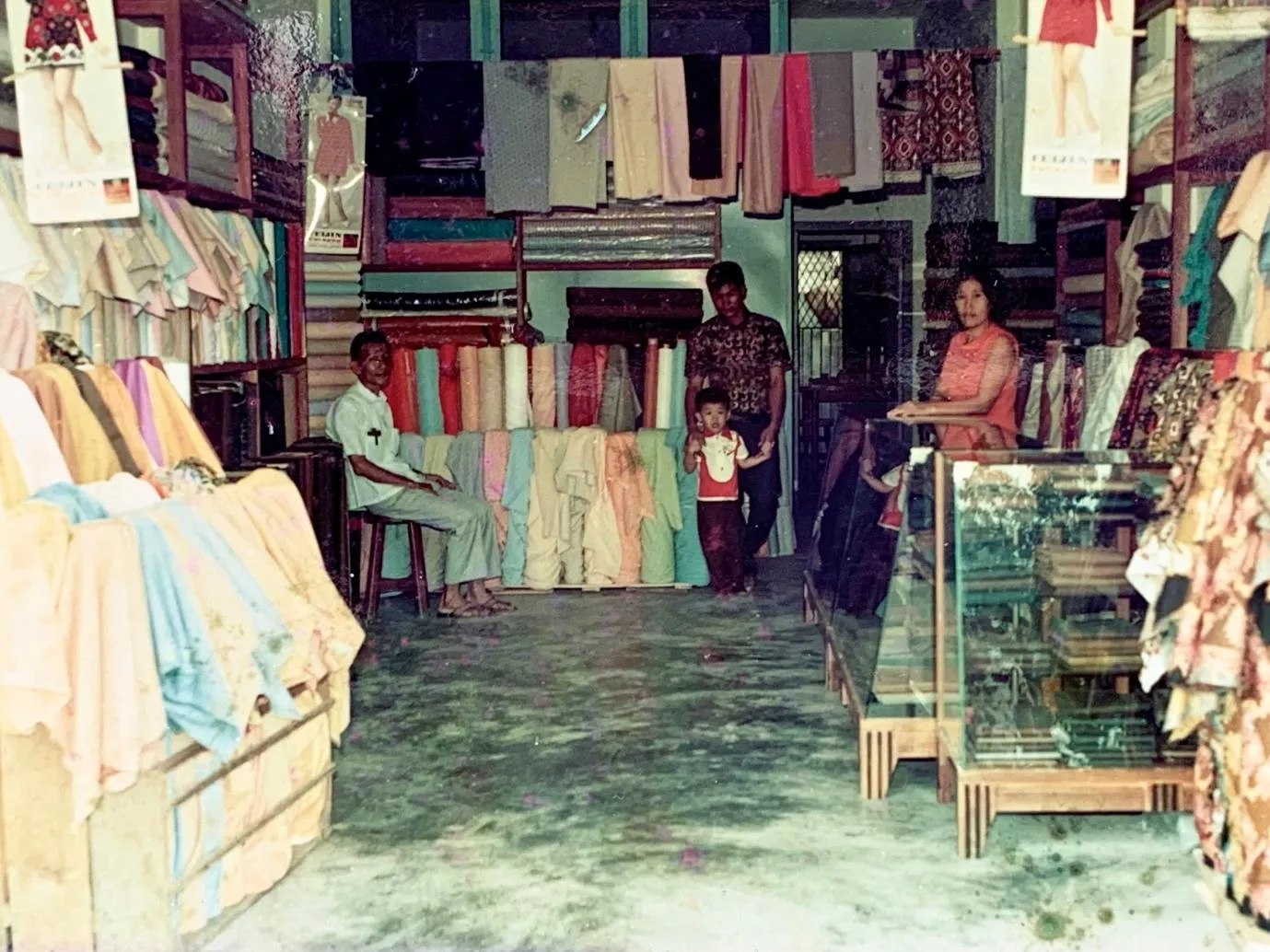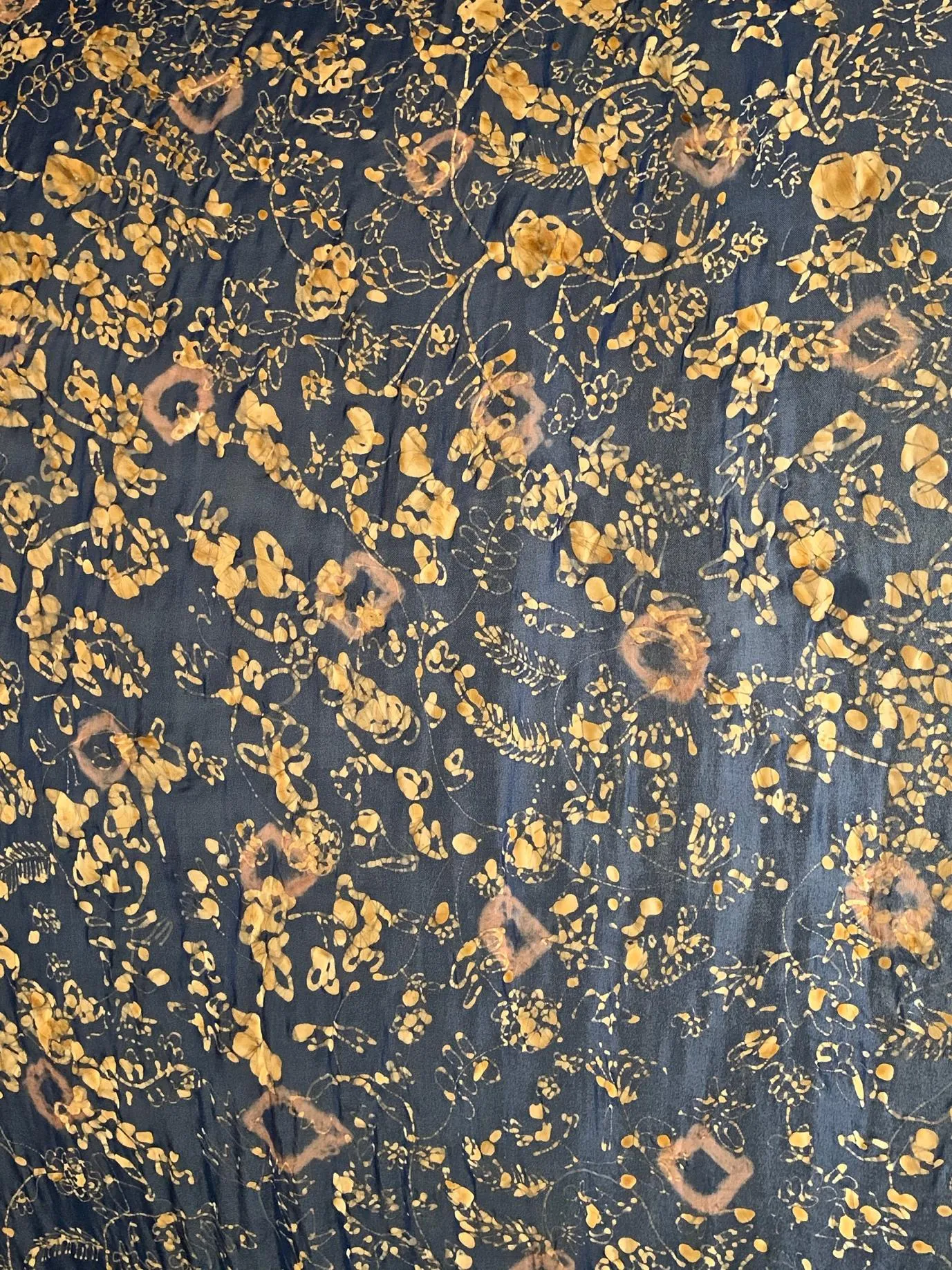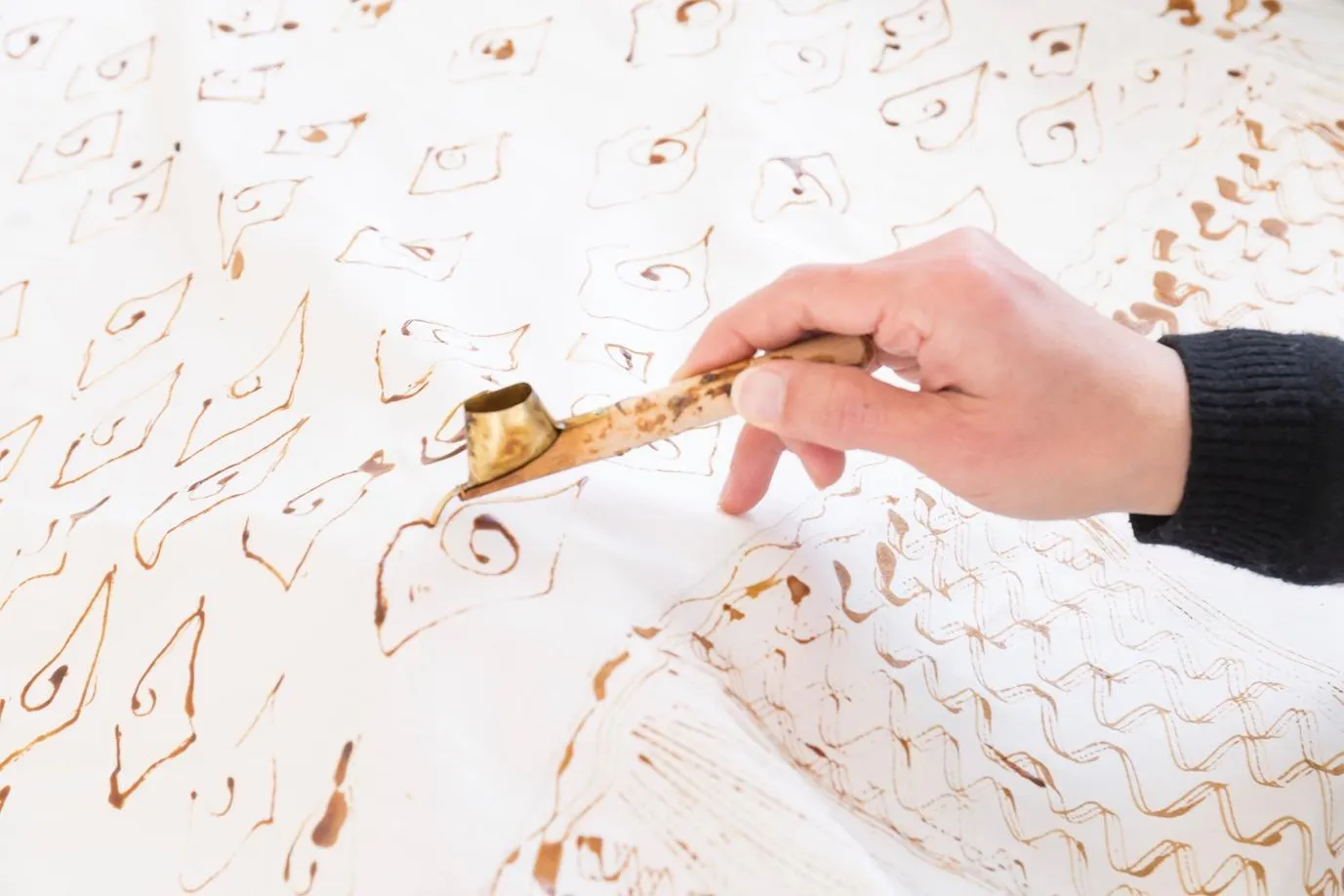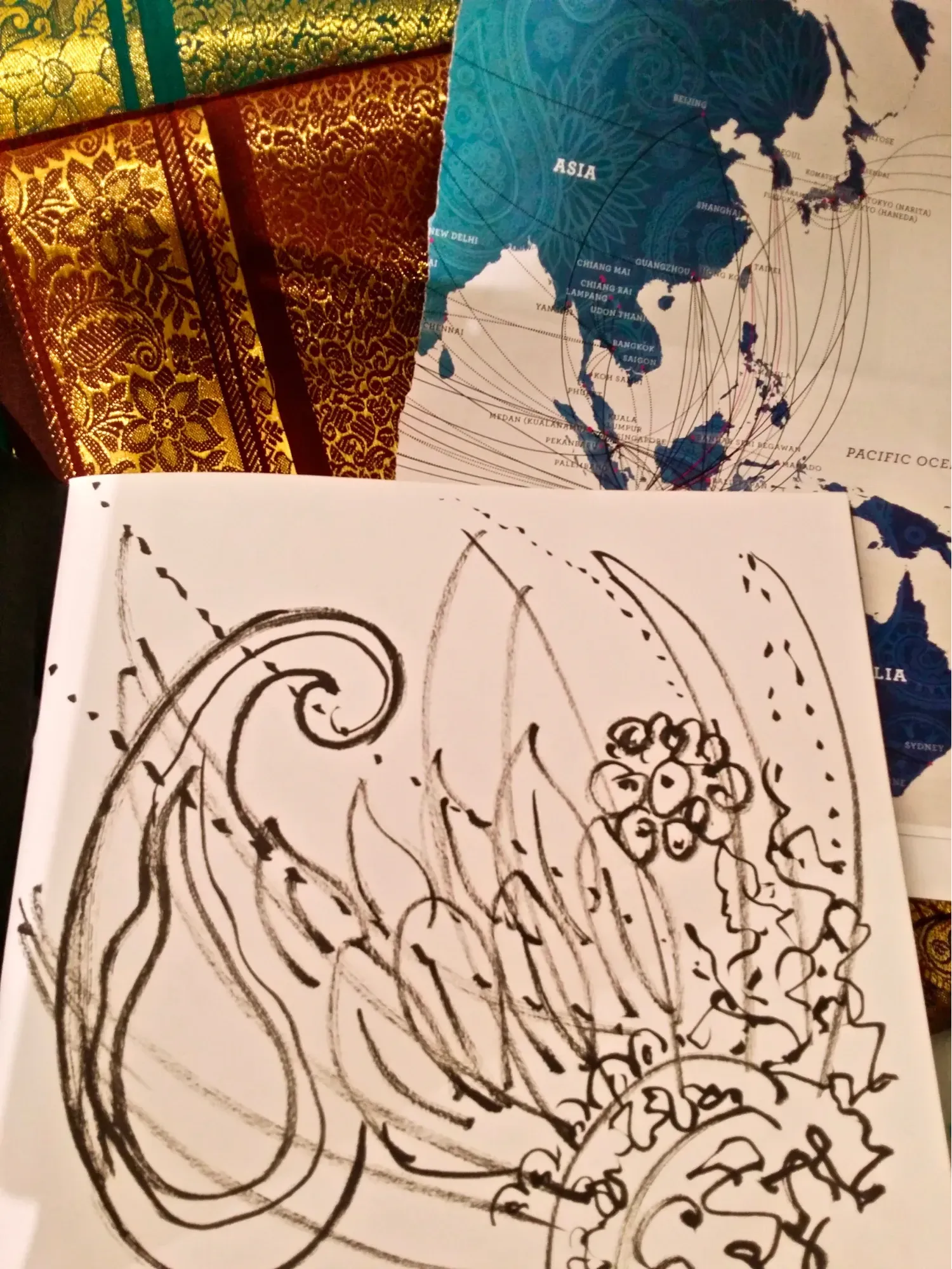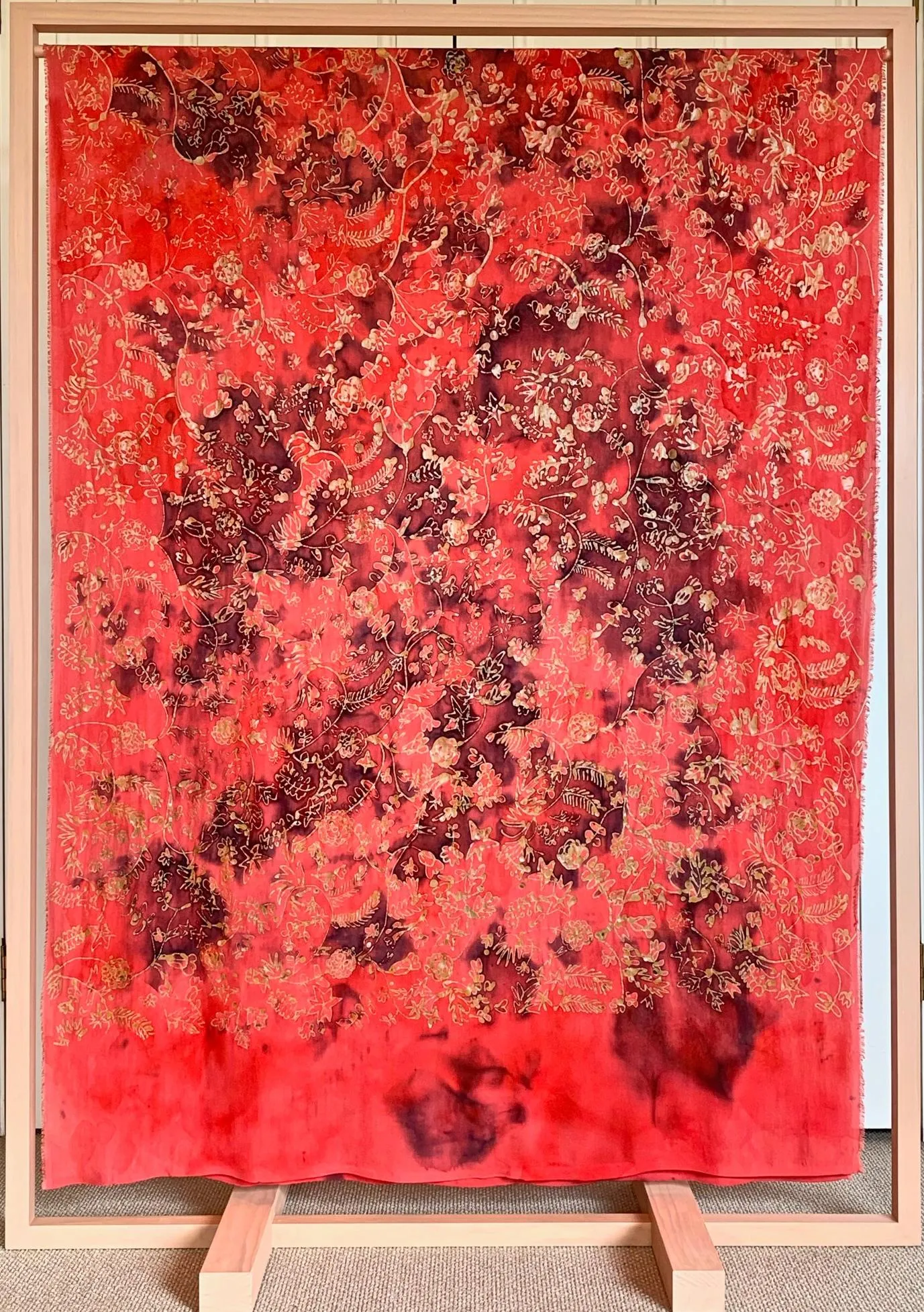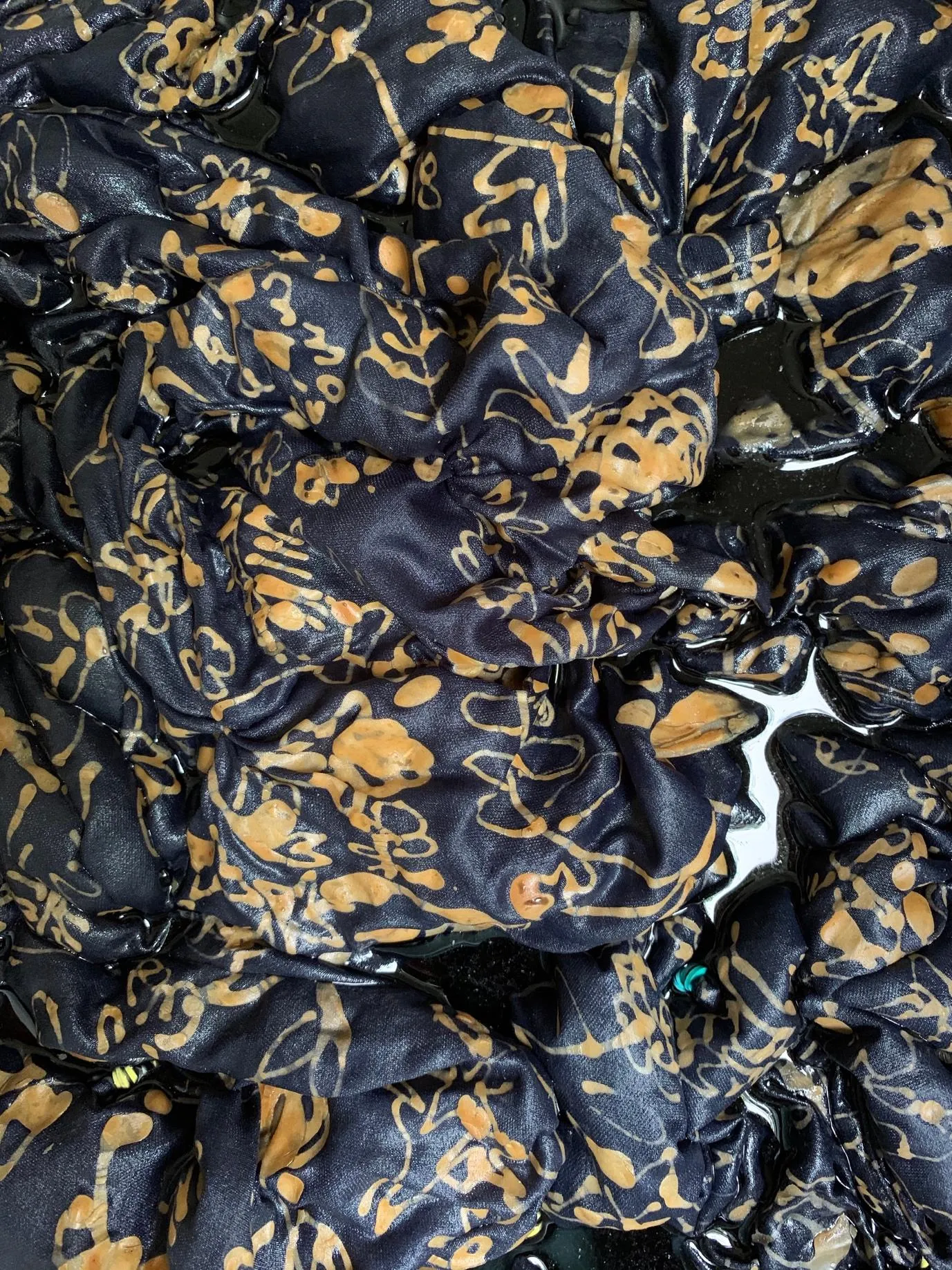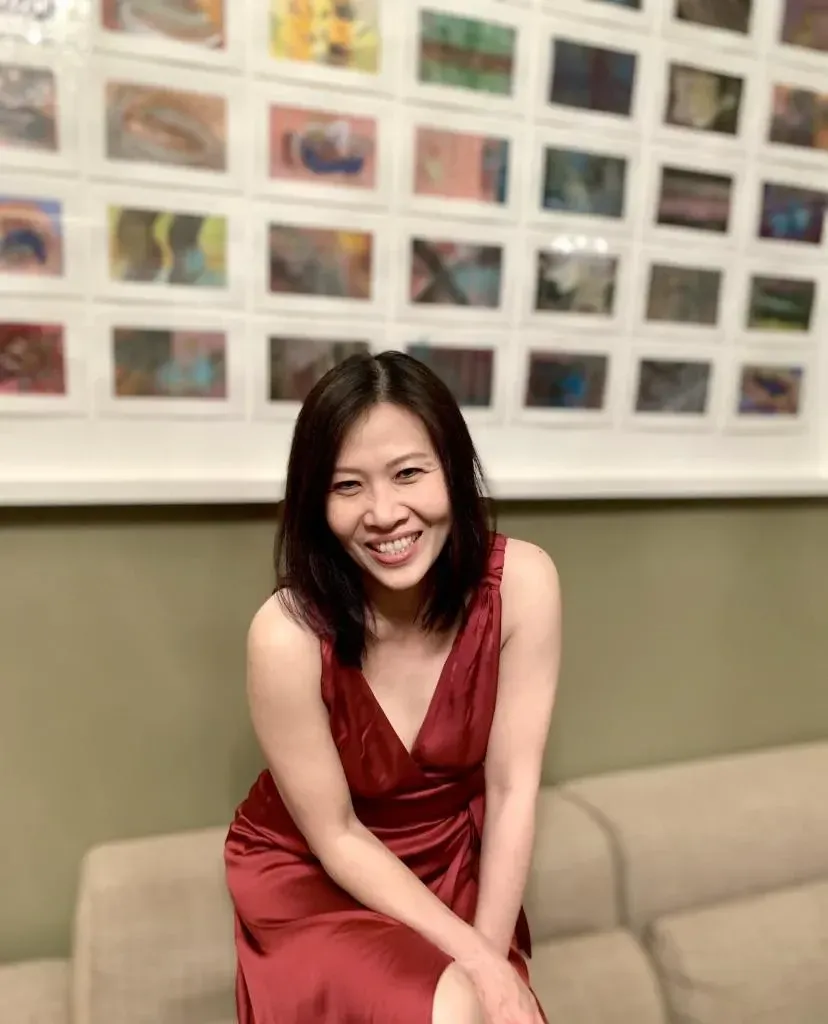House Visits: Connecting Cultures
Written by
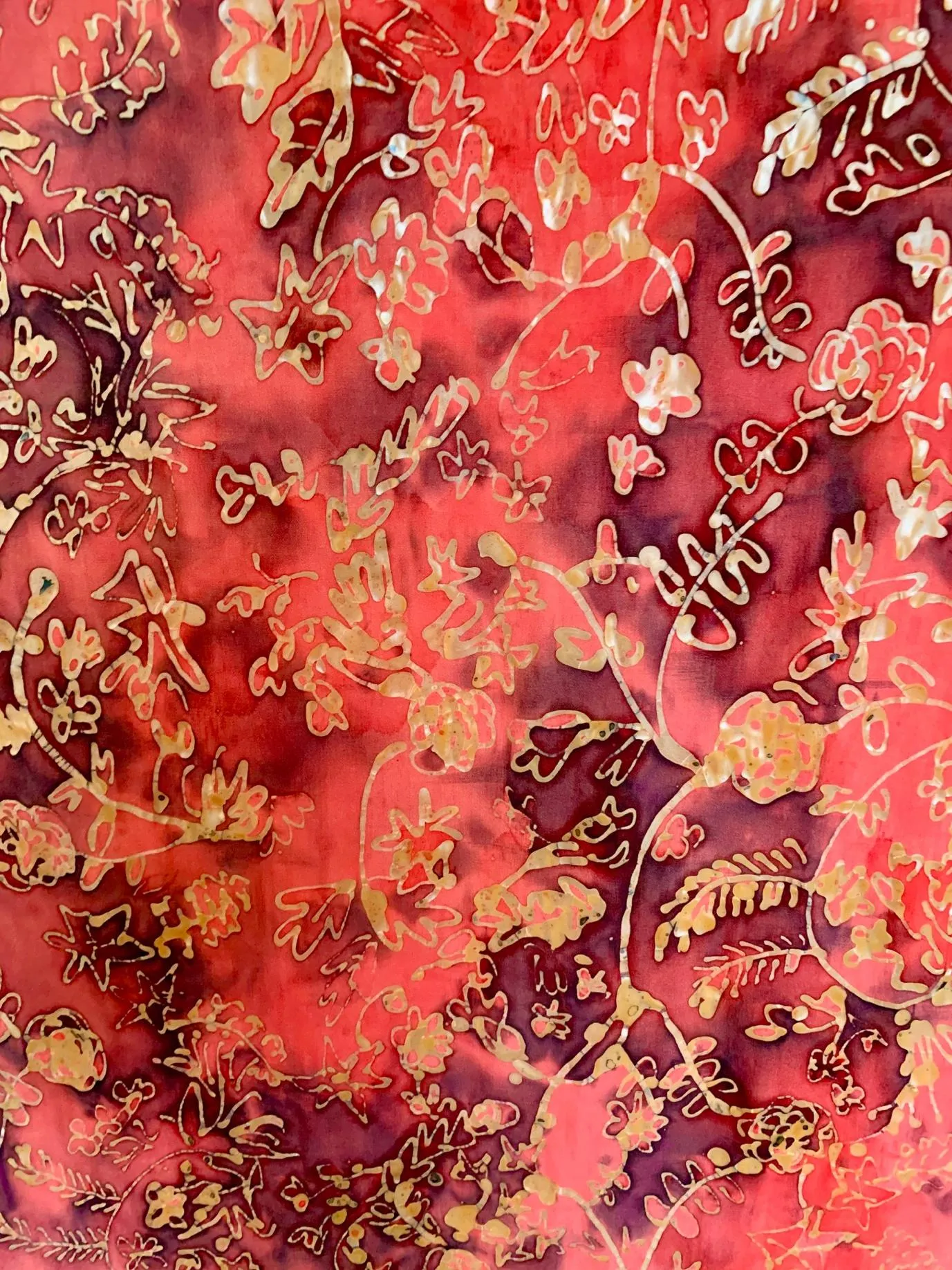
The days of visiting galleries and exhibitions are temporarily on hold. The lost opportunity to get motivation from walking through new spaces and soaking in different works is a void The Big Idea wants to help fill.
Our ‘House Visits’ series takes you into the homes and working spaces of people in the creative world, to see what they have collected on their travels, what it means to them and what they’re using as inspiration inside their own four walls.
Rozana Lee - Auckland
Artists are often thought to be good at living in solitude, in the company of their inner voices, thoughts or things that inspired them, but I think COVID-19 has taken everyone by surprise.
For the past couple months leading to the unprecedented lockdown, I had been working on an Auckland Art Fair 2020 project supported by Deadly Ponies. I made colourful Batik fabrics to form installation work. This gives me the freedom to hang the fabrics from the ceiling, draped across free-standing frames or spread out on the floor. My chosen method of drawing using a Tjanting, a traditional pen-like tool for applying hot wax onto the fabric speaks about my Indonesian cultural heritage.
My process, however, has been slightly altered to suit my research and exploration. In the past, ornamental patterns described a tribe to itself or to other tribes. They now tell a story of my navigations across and between cultures. My practice looks at my personal relation to (South-East) Asia, its connection to Aotearoa, and the social, political, and material histories connecting these countries together.
What inspires me every day, especially during the lockdown:
Old family photos
My grandfather and my father jointly owned a textile shop in Aceh, Indonesia. We lived above it, on the second storey. My mother, who was trained as a seamstress helped at the shop. Textiles are among my earliest memories. Seeing textiles and playing with various patterns, textures, and colour every day throughout my childhood trained my eyes and hands in its appreciation. Textiles connect me to my past, my whakapapa, and is most likely why they have been present in my works.
In 2004, my parents’ shophouse was destroyed by the Boxing day tsunami. The catastrophe killed over 170,000 in my hometown. This included my mother. Right after that, their ravaged shophouse was looted. Everything of value was taken. All that remained was destruction. In the eyes of the Acehnese indigenous communities, we were considered outsiders, unwanted immigrants. But to five generations of our family, Aceh was home.
Ornamental patterns
I collect textiles with ornamental patterns. History shows that ornamental patterns have existed in many cultures. Ornament bears historical and aesthetic knowledge of a specific culture. It also serves as a connecting thread between generations, diverse cultures and countries through the introduction of religion, early migration, international trade, colonisation and cross-cultural exchanges.
No one is attached solely to a single culture; instead we are linked to several.
One Way Amorphous Road
This little piece of writing from a friend of mine came out during our conversation with regards to my art practice, in particular the work I made for Auckland Art Fair 2020. As it turns out, these words are even more relatable now during the lockdown period. I have therefore titled my proposed installation for the Art Fair after a phrase in it:
“An arrow once shot cannot return, and life flows to dwell in a poetic realm, in time and space that is a one way of life and death. And there are different ways we imagine our space in that time: landscapes in nature around us, of the human in us, of the imagination, the imagined frontier beyond either. The arrow that is life shoots into the river and flows to dwell in deeper frontiers. And what returns to us is nostalgia, the pain of separation that screams from our past. The lines of separation are not so great and so inculcates in us a love for ‘that’ place that returns us. And on this one way amorphous road we imagine there is no getting lost.”
Rozana Lee
